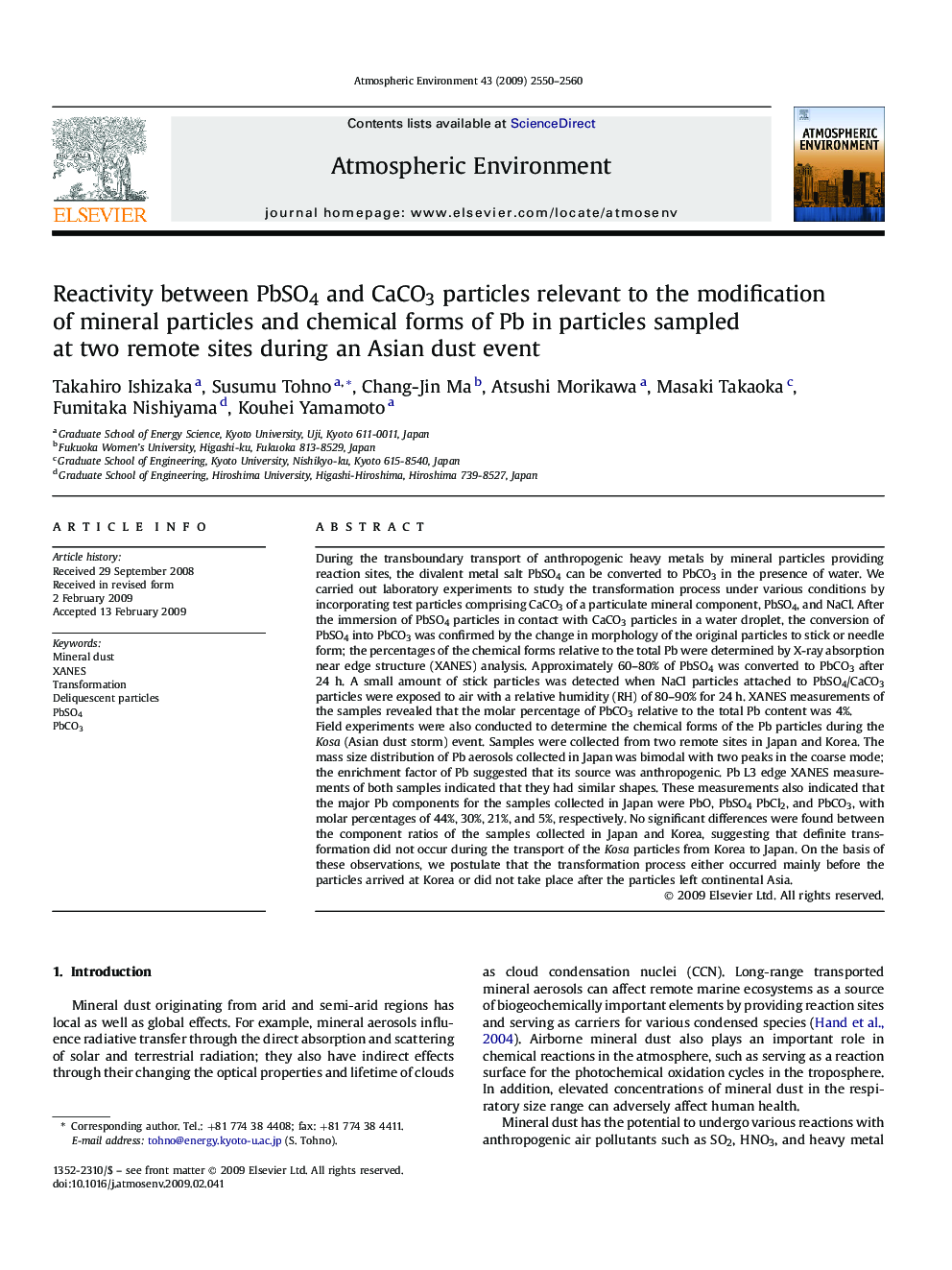| کد مقاله | کد نشریه | سال انتشار | مقاله انگلیسی | نسخه تمام متن |
|---|---|---|---|---|
| 4441831 | 1311125 | 2009 | 11 صفحه PDF | دانلود رایگان |

During the transboundary transport of anthropogenic heavy metals by mineral particles providing reaction sites, the divalent metal salt PbSO4 can be converted to PbCO3 in the presence of water. We carried out laboratory experiments to study the transformation process under various conditions by incorporating test particles comprising CaCO3 of a particulate mineral component, PbSO4, and NaCl. After the immersion of PbSO4 particles in contact with CaCO3 particles in a water droplet, the conversion of PbSO4 into PbCO3 was confirmed by the change in morphology of the original particles to stick or needle form; the percentages of the chemical forms relative to the total Pb were determined by X-ray absorption near edge structure (XANES) analysis. Approximately 60–80% of PbSO4 was converted to PbCO3 after 24 h. A small amount of stick particles was detected when NaCl particles attached to PbSO4/CaCO3 particles were exposed to air with a relative humidity (RH) of 80–90% for 24 h. XANES measurements of the samples revealed that the molar percentage of PbCO3 relative to the total Pb content was 4%.Field experiments were also conducted to determine the chemical forms of the Pb particles during the Kosa (Asian dust storm) event. Samples were collected from two remote sites in Japan and Korea. The mass size distribution of Pb aerosols collected in Japan was bimodal with two peaks in the coarse mode; the enrichment factor of Pb suggested that its source was anthropogenic. Pb L3 edge XANES measurements of both samples indicated that they had similar shapes. These measurements also indicated that the major Pb components for the samples collected in Japan were PbO, PbSO4 PbCl2, and PbCO3, with molar percentages of 44%, 30%, 21%, and 5%, respectively. No significant differences were found between the component ratios of the samples collected in Japan and Korea, suggesting that definite transformation did not occur during the transport of the Kosa particles from Korea to Japan. On the basis of these observations, we postulate that the transformation process either occurred mainly before the particles arrived at Korea or did not take place after the particles left continental Asia.
Journal: Atmospheric Environment - Volume 43, Issue 16, May 2009, Pages 2550–2560